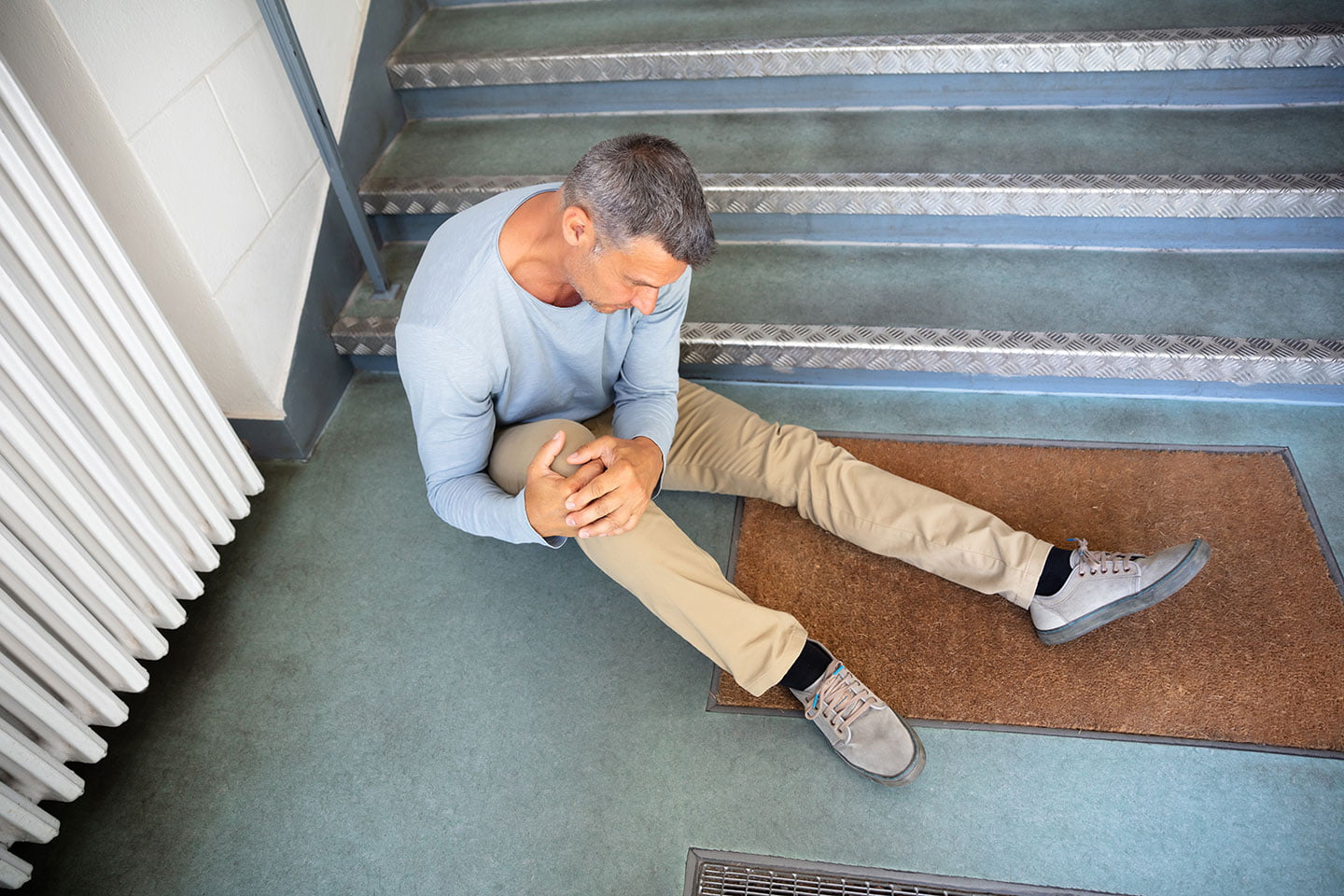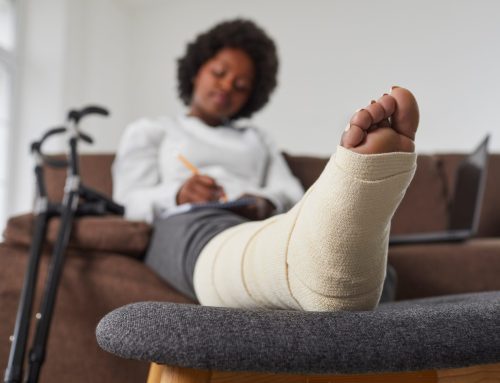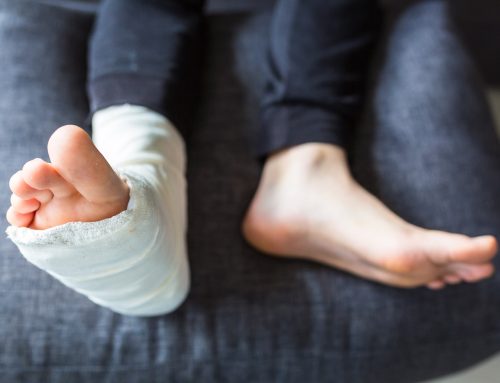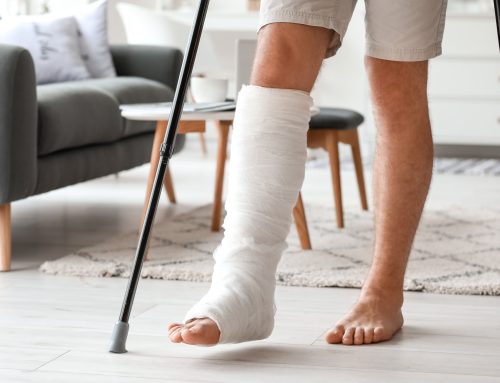Have you ever wondered why some people seem to break bones more easily than others? It doesn’t necessarily mean they’re clumsier than the average person. The answer may lie in their bone density. In this blog, we’ll explore more about bone density, how it affects your risk of fractures, and what you can do to maintain strong and healthy bones throughout your life.

Bone Density: The Building Blocks of Your Skeleton
Bone density, also known as bone mineral density (BMD), is a measure of the amount of minerals, particularly calcium, present in your bones. Higher bone density means stronger bones that are less prone to fractures. A variety of factors influence bone density, including age, gender, genetics, nutrition, and physical activity. We’ll look at each of these contributing categories that affect your bone health so you can be proactive with your health plan to avoid unnecessary fractures.
The Role of Age and Gender in Bone Density
As we age, our the density of our bone naturally decreases. This isn’t something to be particularly alarmed about unless you’re experiencing more significant bone loss than others. This can lead to an increased risk of fractures. This is why density tests are crucial for determining where you fall compared to others in your age group. If you have an early indicator of accelerated bone loss, you can take steps to prevent it from worsening.
Gender also plays a crucial role in bone density. Women tend to have lower density than men, making them more susceptible to fractures. Additionally, women experience a more rapid decline after menopause due to decreased estrogen levels, which play a vital role in maintaining bone health.
Genetics and Your Bone Density
Your family history can significantly impact the density of your bones. If you have a close relative with osteoporosis, a condition characterized by low bone density and increased risk of fractures, you may be at a higher risk of developing the disease yourself. Certain genetic factors can also affect how efficiently your body absorbs and uses calcium, an essential mineral for bone health.
Nutrition: Feeding Your Bones
A well-balanced diet is crucial for maintaining healthy bones. Consuming sufficient amounts of calcium and vitamin D is particularly important. Calcium is the primary building block of bones, while vitamin D aids in the absorption of calcium and promotes bone growth.
Calcium-rich foods include dairy products, leafy green vegetables, and fortified foods like orange juice and breakfast cereals. Vitamin D can be obtained from fatty fish, egg yolks, fortified foods, and exposure to sunlight. In some cases, dietary supplements may be recommended to ensure adequate intake of these essential nutrients.
Physical Activity: Strengthening Your Bones
Regular physical activity is essential for overall health and plays a vital role in maintaining and even improving density. Weight-bearing exercises like walking, jogging, dancing, and resistance training can help stimulate bone formation and slow down bone loss.
Aim to incorporate at least 30 minutes of weight-bearing exercise into your daily routine. It's always possible to start, as even older adults can benefit from regular physical activity in terms of bone health.
Assessing Your Bone Density
Bone density can be measured using a non-invasive test called a dual-energy X-ray absorptiometry (DEXA) scan. This test uses low-dose X-rays to determine the mineral content in your bones, providing valuable information about your risk of fractures.
Your doctor may recommend a bone density test if you have specific risk factors, such as a family history of osteoporosis, previous fractures, or certain medical conditions and medications that can affect bone health.
Osteoporosis: When Bone Density Becomes a Concern
Osteoporosis is a condition characterized by low bone density, making bones more fragile and susceptible to fractures. In extreme cases, a simple stumble or bump into your coffee table could result in a break.
Osteoporosis affects millions of people worldwide, especially older adults and postmenopausal women. The good news is that osteoporosis is preventable and treatable with lifestyle modifications, such as a balanced diet, regular physical activity, and, in some cases, medication.
To keep your bones healthy and strong, follow these simple yet effective tips:
- Consume a well-balanced diet rich in calcium and vitamin D.
- Engage in regular weight-bearing exercises to stimulate bone formation and reduce bone loss.
- Avoid smoking and limit alcohol consumption, as both can negatively impact bone health.
- Maintain a healthy body weight to reduce stress on your bones.
- Discuss your bone health with your healthcare provider, especially if you have risk factors for low bone density or osteoporosis.
Understanding bone density and its impact on your risk of fractures is essential for maintaining strong, healthy bones throughout your life. By being proactive about your bone health and adopting a balanced diet, regular physical activity, and a healthy lifestyle, you can significantly reduce your risk of fractures and enjoy an active, fulfilling life.
Despite your best efforts, fractures can still occur. By implementing a low-intensity pulsed ultrasound device into your treatment plan, you can heal 38% faster. Contact Fracture Healing to find out more about the device that will accelerate your journey to pre-injury living.
What’s your favourite bone-building exercise? How do you incorporate bone-building habits into your routine? Share your thoughts with our readers in the comments below.





